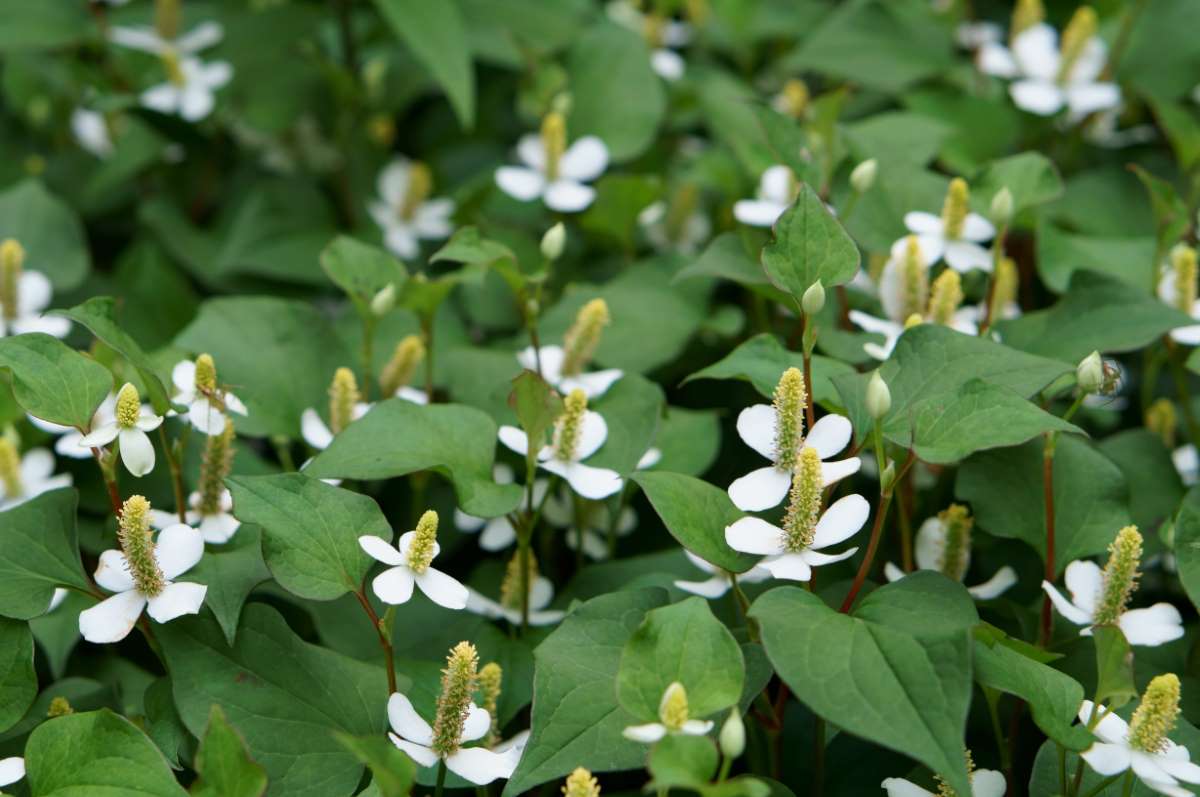Description
Houttuynia –
There is a sole species of a perennial, in this genus. It occurs in damp, shady sites in woodland, scrubs, and marshy habitats in Eastern Asia. It has widely spreading rhizomes and is grown mainly for its foliage, which is dark green, heart shaped, red edged. It bears spikes of tiny yellowish flowers with 4 pure white bracts at the base of each spike. Use as a groundcover, in a damp, mixed or herbaceous border, at a pond or stream side, or for planting in shallow water. H. cordata is invasive, especially in moist soils, cultivars are generally only slightly less vigorous.
Grow in moderately fertile, humus rich, moist soil in full sun or dappled shaped, variegate cultivars produce greener leaves in shade. On wet soils where marginally hardy, apply a loose but deep winter mulch to protect the roots. At the water’s edge, grow in 3-4″ of water, in shallow ponds, the spread may be limited by planting in a large container. Divide rhizomes in late spring.
Prone to slugs and snails.
H. cordata – This deciduous, rapidly, spreading perennial found from the Himalayas to Japan grows 6-12″ tall with an indefinite spread. It produces simple, ovate to heart shaped, dull bluish or grayish green leaves, 1 1/4-3 ½” long, with red tinted edges. The leaves have unusual, orange-like scent when bruised. In summer, bears dense spikes, to 1 1/4″ long, of tiny, yellowish green flowers, surrounded at the base by 4-6 green-white, later pure white, obovate, petal like bracts, to ½” across.
Zones 5-11





